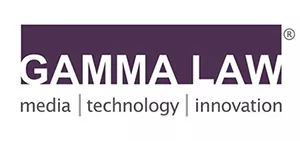- in United States
- with readers working within the Advertising & Public Relations and Banking & Credit industries
- within Corporate/Commercial Law, Privacy and Technology topic(s)
Is it possible that granting intellectual property rights protection to political commentary could actually limit rather than promote free speech?
That question presents an interesting subplot as the US Supreme Court weighs in on Vidal v. Elster, an intriguing exercise in the relativity of the First Amendment, trademark, and privacy/publicity. The focal point of the debate is whether the US Patent and Trademark Office (USPTO) was within its right to deny trademark protection to the phrase "Trump too small," or whether the denial infringed on the applicant's free speech rights. The Court's decision will exert a profound influence on the equilibrium between trademark law and First Amendment rights and expand the enduring discourse surrounding the scope of free speech and its limitations within our contemporary societal context, reinforcing its relevance and importance in the professional and legal spheres.
The plaintiff's attorney seeks to frame the case as an "indefensible" attempt by the USPTO to squelch political messaging and criticism. The trademark office counters that there's no scheme to prevent the sentiment from being used or expressed, only the desire to prevent someone from monopolizing the phrase through trademark.
"It is the registration of marks like respondent's – not the refusal to register them – that would 'chill' such speech," USPTO's writ of certiorari states. "After all, a trademark gives its owner the right to prevent others from using the mark."
How We Got Here
Seeking to capitalize on an exchange between Republican presidential candidate Marco Rubio and eventual nominee and President Donald Trump during a 2016 debate, attorney Steve Elster filed an application in January 2018, to register "Trump Too Small" as a trademark for use on apparel such as T-shirts and hats. This phrase originates from Rubio's contention that for a big man, Trump has inordinately small hands. While the implication was clear, Rubio hastened to add that small hands indicate a deficiency in trustworthiness rather than in other physical attributes.
Elster contends that the phrase comments on Trump's underdeveloped presidential policies and personality. The application set in motion a series of conflicting rulings on the case's way to final adjudication by the Supreme Court:
- USPTO denied Elster's application, and the decision was upheld by the agency's in-house Trademark Trial and Appeal Board because the witticism refers to a specific living individual without his written consent.
- Elster appealed to the US Court of Appeals for the Federal Circuit, which reversed the ruling in February 2022. The court ruled that the government's interest in protecting privacy and publicity rights did not outweigh Elster's substantial First Amendment right to criticize public figures.
- USPTO appealed to the Supreme Court.
Fundamental Rights in Conflict
As the Court examines the delicate balance between trademark law and the First Amendment, its decision likely hinges on the justices' interpretation of Section 2(c) of the Lanham Act, a federal statute that governs trademarks, service marks, and unfair competition. The Act's Section 2(c) prohibits the registration of a trademark that identifies a living individual without their consent. This case's outcome will have profound implications for intellectual property law and the broader discourse surrounding the boundaries of free speech.
- USPTO's Position – The
office and the appeals board maintained that Section 2(c) does not
infringe upon free speech rights, asserting it is "narrowly
tailored to advance two compelling government interests: protecting
the named individual's rights of privacy and publicity and
protecting consumers against source deception." One of the
pivotal aspects of this case involves Trump's right to privacy
and publicity. Allowing the registration would violate the
prohibition on registering any mark that identifies a
"particular living individual" without their consent even
when that individual is the President of the United States.
The right of publicity protects unauthorized use of a person's name and likeness for financial gain. This right, an offshoot of the right to privacy, has become an integral part of personal identity protection in the age of digital media and commercial exploitation. Yet, the case poses intriguing questions about where the line should be drawn between these rights and the First Amendment, especially when political criticism is involved. - Elster and the Circuit Court's Opinion
– On appeal, the Circuit Court concluded that
Section 2(c) violates the First Amendment when the mark in question
criticizes a government official or public figure because it would
impose an unconstitutional content-based restriction. "The
government has no valid public interest that could overcome the
First Amendment protections afforded to the political criticism
embodied in Elster's mark," it said.
Circuit Judge Timothy Dyk, in his decision, made a compelling argument. He contended that there is no legitimate interest in protecting the privacy of public figures like President Trump, whom he referred to as "the least private name in American life." He further stated that publicity rights that protect people's use of their name in commerce "cannot shield public figures from criticism."
Precedent
USPTO petition for hearing before the Supreme Court argued that the case provides an opportunity to answer questions left pending by two other Lanham Act-based decisions. In Matal v. Tam (2017) the Court decided that refusal to register trademarks on the grounds that they may "disparage" groups of people violates the First Amendment. The Court held that the potential to denigrate is based on viewpoint, which cannot be a basis for the government to restrict private speech.
The Court reached a similar decision in Iancu v. Brunetti (2019), holding that Section 2(a) prohibition of "immoral" or "scandalous" material violated the First Amendment because the government cannot discriminate against speech based on the value of its content. A more compelling reason must be cited.
The USPTO believes that because these decisions prohibited viewpoint-based denials of intellectual property rights, its denial in Vidal is justified because Section 2(c) is "viewpoint-neutral" and therefore does not violate the First Amendment. Elster counters that the application of Section 2(c) is unconstitutional because the denial of registration is based on the phrase's content. The section, the respondent asserts, is unconstitutional. In its purpose to protect the reputation of living people, it discriminates against certain types of speech.
Nonetheless, the Supreme Court has previously endorsed the government's authority to restrict trademarks under certain conditions, such as when they are deceptive or advocate illegal activity.
Lower courts have applied a variety of legal tests used to determine whether a particular use of a public figure's right of publicity is protected by the First Amendment:
- Rogers Test: Ginger Rogers, who formed half of the famous dance pairing with Fred Astaire, filed suit in Rogers v. Grimaldi (1989). The 2nd US Circuit Court of Appeals decided that to be permissible, the use of a public figure's name or likeness must 1) be relevant to the underlying work, and 2) not explicitly mislead as to the source or content of the work.
- Predominant Use Test: The Missouri Supreme Court expanded the Rogers Test definition in Doe v. TCI Cablevision (1999). It decided that the comic book series Spawn used former NHL player Tony Twist's likeness predominantly for commercial purposes, in violation of the celebrity's right to publicity. However, if the predominant use is expressive, then it is more likely to be protected by the First Amendment.
- Transformative Use Test: This test, arising from Campbell v. Acuff-Rose Music (1994) over 2 Live Crew's parody of the song, "Oh, Pretty Woman." The Supreme Court ruled that a new work that adds something new to the celebrity's likeness rather than simply exploiting it for commercial purposes is more likely to be protected by the First Amendment.
Despite its decision in Campbell, the Supreme Court has not yet ruled on which of these tests should determine whether a use of a celebrity's right of publicity is protected by the First Amendment. As a result, courts have applied the tests differently in different cases. Some courts have used hybrid tests integrating language from two or all three decisions in their opinions. The choice often depends on the specific circumstances of the case and the jurisdiction. Vidal may therefore establish the precedent.
Implications
Should the Supreme Court declare Section 2(c) of the Lanham Act unconstitutional, it would significantly reshape the landscape of trademark law. Such a verdict would permit third-party registration of trademarks incorporating the names of living individuals without their consent, potentially engendering consumer confusion and inflicting reputational harm.
On the other hand, if the court upholds the statute, public figures could monopolize consumer products, using their names exclusively in ways they consent to, effectively silencing critics. This threatens to stifle public debate and impede free speech, particularly when it involves commentary on public figures who hold significant sway over matters of public importance
The content of this article is intended to provide a general guide to the subject matter. Specialist advice should be sought about your specific circumstances.


